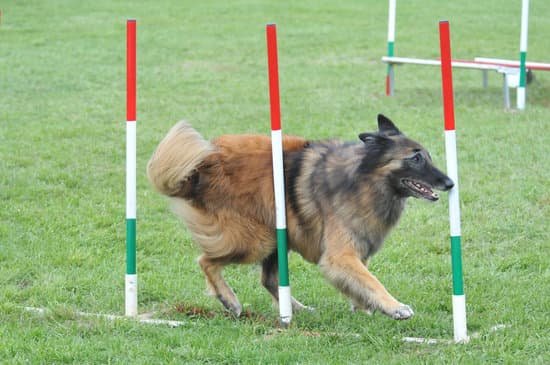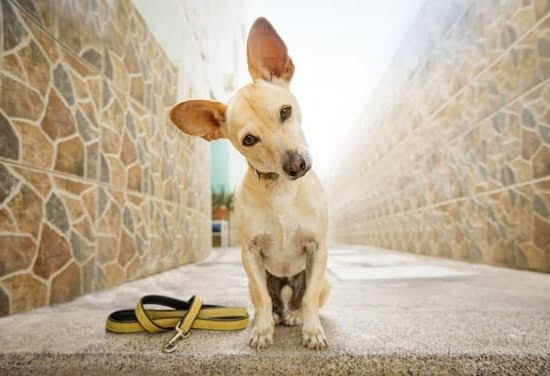Training a dog using a gentle leader is an effective and humane way to teach obedience and proper behavior. This innovative training tool helps pet owners control their dog’s movements without causing discomfort or harm. In this article, we will delve into the concept of gentle leaders for dogs, exploring the benefits they offer in training and how to properly use them.
A gentle leader works by redirecting your dog’s attention and controlling their movements through gentle pressure on specific points of their head and neck. This method avoids the potential harm or discomfort that traditional collars or harnesses may cause. By understanding how a gentle leader functions, pet owners can effectively train their dogs in a safe and practical manner.
The key to successfully training your dog with a gentle leader lies in choosing the right size and fit for your furry companion. Ensuring a proper fit will not only make the training process more comfortable for your dog but also improve its effectiveness. As we explore further into this article, we will discuss how to select the appropriate gentle leader for your dog’s breed and size, setting the foundation for successful training sessions.
Benefits of Using a Gentle Leader for Training
Gentle leader is a valuable tool for training dogs as it provides a gentle and effective way to control and guide your furry companion. One of the key benefits of using a gentle leader is that it helps in discouraging pulling during walks. When properly fitted and introduced to the dog, the gentle leader can help redirect your pet’s attention back to you, making leash training more manageable and enjoyable for both of you.
Another advantage of using a gentle leader is that it can assist in correcting unwanted behaviors without causing harm or discomfort to your dog. Unlike traditional collars that may put pressure on the neck or throat, a gentle leader redirects your dog’s head, prompting them to follow your lead in a natural way. This method not only helps prevent injuries but also fosters trust and better communication between you and your pet.
When learning how to train a dog with a gentle leader, it is essential to understand not only the benefits but also the proper techniques for effective training. Introducing the gentle leader gradually, ensuring proper fit, practicing patience, consistency, and positive reinforcement are all crucial elements in successfully using this training tool. With dedication and perseverance, both you and your canine companion can enjoy the many advantages of training with a gentle leader.
| Benefits | Details |
|---|---|
| Discourages Pulling | The gentle leader helps redirect attention during walks |
| Corrects Behaviors | Avoids neck strain while effectively guiding the dog |
| Fosters Trust | Promotes better communication between owner and pet |
Choosing the Right Size and Fit for Your Dog’s Gentle Leader
Understanding the Importance of Proper Fit
When it comes to training your dog with a gentle leader, one crucial aspect that should not be overlooked is ensuring the right size and fit for your furry companion. A gentle leader that fits well not only ensures effectiveness in training but also guarantees your dog’s comfort and safety. An ill-fitting gentle leader can lead to discomfort, chafing, or even injuries for your dog, so taking the time to choose the correct size is essential.
Measuring Your Dog for the Perfect Fit
To determine the right size of the gentle leader for your dog, you’ll need to measure their head circumference and neck size. Most gentle leaders come with sizing guidelines provided by the manufacturer, so make sure to follow these instructions carefully.
It’s important to remember that a properly fitting gentle leader should be snug without being too tight or too loose. You should be able to fit two fingers comfortably between your dog’s skin and the straps of the gentle leader.
Selecting the Style That Works Best for Your Dog
There are different styles of gentle leaders available on the market, such as traditional ones that go around your dog’s nose or newer designs that provide a more comfortable fit. Depending on your dog’s breed, behavior, and comfort level, you may opt for a certain style over another. Some dogs may find a particular style more comfortable than others, so it might require some trial and error to find what works best for your furry friend.
Considering these factors when choosing the right size and fit for your dog’s gentle leader will set a solid foundation for successful training sessions. Remember, patience and consistency are key when introducing new training tools to your dog, so take the time to ensure they are comfortable with their new accessory before starting any training exercises. With proper sizing and fitting, you’re one step closer to effectively using a gentle leader in training your beloved pet.
Getting Your Dog Comfortable With Wearing the Gentle Leader
When it comes to training your dog with a gentle leader, one of the crucial steps is to help them become comfortable wearing it. Here are some tips on how to achieve this:
1. Start Slowly: Introduce the gentle leader to your dog gradually. Allow them to sniff and inspect it before attempting to put it on.
2. Positive Association: Associate the gentle leader with positive experiences by giving treats whenever your dog shows interest in or wears the gentle leader.
3. Short Sessions: Initially, keep the gentle leader on for short periods of time, gradually increasing the duration as your dog becomes more accustomed to it.
Once your dog is comfortable wearing the gentle leader, you can move on to using it for training purposes, such as teaching them how to walk politely on a leash without pulling. Remember that patience and consistency are key in this process. By taking these small steps, you can help your furry friend see the gentle leader as a useful tool rather than a source of discomfort.
Step-by-Step Guide on How to Properly Introduce the Gentle Leader to Your Dog
Introducing a gentle leader to your dog can be a key step in successfully training them to walk on a leash without pulling. When properly introduced, the gentle leader can help redirect your dog’s attention and discourage unwanted behaviors during walks. Here is a step-by-step guide on how to properly introduce the gentle leader to your furry friend.
First, it is important to allow your dog to sniff and inspect the gentle leader before putting it on. This will help them become familiar with the new equipment and reduce any anxiety they may have about wearing it. You can also use treats or rewards to create positive associations with the gentle leader, making your dog more comfortable with the idea of wearing it.
Next, gently place the gentle leader over your dog’s nose and behind their ears, making sure it fits snugly but not too tight. It is essential to ensure that the gentle leader is fitted correctly to prevent discomfort or choking. Allow your dog some time to get used to the sensation of wearing the gentle leader before moving onto the next step.
Once your dog is comfortable with wearing the gentle leader, you can begin practicing short sessions of walking indoors or in a quiet, familiar environment. Use treats and praise to reward your dog for walking calmly beside you while wearing the gentle leader.
Remember to be patient and consistent in your training efforts, as introducing a new tool like a gentle leader can take time for some dogs to adjust. By following these steps and using positive reinforcement techniques, you can effectively introduce the gentle leader to your dog and set them up for success in leash training.
Techniques for Teaching Your Dog to Walk on a Leash Using the Gentle Leader
Using a gentle leader to train your dog to walk on a leash can be extremely effective in teaching them proper leash manners and maintaining control during walks. By utilizing the gentle pressure applied by the leader, you can guide your dog’s head without causing any discomfort or harm. This section will provide you with some techniques on how to effectively teach your dog to walk on a leash using the gentle leader.
One important technique is to start by allowing your dog to get accustomed to wearing the gentle leader before actually going for a walk. Let them sniff and investigate the leader while rewarding them with treats for showing curiosity and calm behavior. This will create a positive association with the gentle leader, making it more likely for your dog to accept it when it’s time for their walk.
Once your dog is comfortable wearing the gentle leader, you can begin teaching them how to walk with it. Start by walking around your home or backyard, using treats and verbal cues to encourage them to stay by your side.
Whenever they pull or try to move ahead, gently redirect their attention back towards you. Remember to remain patient and consistent during this process, as it may take some time for your dog to adjust to the feeling of being guided by the gentle leader.
As you continue practicing with the gentle leader, gradually increase the distance and duration of your walks. Use positive reinforcement techniques such as praise, treats, and playtime as rewards for good behavior.
Remember that every dog learns at their own pace, so being understanding and supportive throughout the training process is crucial for success. By following these techniques and staying committed to the training, you can help your dog become a well-behaved walker who enjoys their time on a leash using the gentle leader.
Troubleshooting Common Issues When Training With a Gentle Leader
When using a gentle leader to train your dog, you may encounter some common issues along the way. It’s important to address these challenges with patience and consistency to ensure successful training. Here are some troubleshooting tips to help you navigate through any difficulties:
- Improper fit: One of the most common issues when using a gentle leader is an improper fit. Make sure that you have selected the correct size for your dog’s breed and adjusted it properly. The gentle leader should fit snugly without being too tight or too loose.
- Resistance: Some dogs may resist wearing a gentle leader initially. To help your dog get comfortable, start by allowing them to sniff and investigate the gentle leader before putting it on. Use treats and positive reinforcement to create a positive association with wearing the gentle leader.
- Pulling or lunging: If your dog continues to pull or lunge while wearing the gentle leader, it may indicate that they haven’t fully grasped how to walk properly with it. Practice walking in controlled environments and redirect their attention back to you using treats or rewarding good behavior.
Remember, every dog is unique and may require different strategies when training with a gentle leader. Patience and consistent training will be key in overcoming any challenges that arise during the process. By understanding your dog’s behavior and addressing issues proactively, you can successfully train them using a gentle leader for a more enjoyable walking experience.
By following these troubleshooting tips and remaining patient throughout the training process, you will be able to effectively utilize the gentle leader as a tool for teaching your dog proper leash manners. With time and dedication, both you and your furry companion will reap the benefits of structured walks with improved behavior and communication.
Consistency and Patience
Consistency Is Key
Consistency plays a crucial role in successfully training your dog with a gentle leader. It is important to establish a routine and stick to it, as dogs thrive on predictability and repetition. Make sure to use the gentle leader every time you take your dog out for walks or training sessions. Consistent use will help your dog understand the association between wearing the gentle leader and appropriate behavior.
Patience Pays Off
Training with a gentle leader can take time, especially if your dog is not used to wearing one. It is essential to be patient throughout the process and not get frustrated if progress seems slow. Remember that every dog learns at their own pace, so maintaining a calm and positive attitude will make training more effective. Patience also involves giving your dog time to adjust to the gentle leader and offering plenty of praise and rewards for good behavior.
Seek Professional Help if Needed
If you are struggling with training your dog using a gentle leader despite being consistent and patient, do not hesitate to seek professional help. A certified dog trainer or behaviorist can provide valuable guidance and support to ensure that you and your furry friend are on the right track.
They can offer personalized tips and techniques tailored to your dog’s specific needs, making the training process smoother and more successful. Remember, asking for help is a sign of dedication to your pet’s well-being.
Conclusion
In conclusion, using a gentle leader to train your dog can be a highly effective and humane way to teach proper leash manners and behavior. By understanding the concept of a gentle leader and the benefits it provides, you are setting yourself and your furry friend up for success in their training journey.
It’s crucial to choose the right size and fit for your dog’s gentle leader to ensure their comfort and safety during training sessions. Taking the time to properly introduce the gentle leader to your dog and getting them comfortable with wearing it will set a positive tone for the rest of the training process.
Patience and consistency are key when using a gentle leader to train your dog. By following a step-by-step guide and utilizing positive reinforcement techniques, you can help your canine companion learn how to walk on a leash in a controlled and manageable manner.
Remember, every dog is unique, so troubleshooting common issues as they arise with patience and understanding is essential for successful training with a gentle leader. With dedication, positivity, and kindness, you can build a strong bond with your pup while teaching them good leash manners through gentle leadership.
Frequently Asked Questions
Are Gentle Leaders Good for Dogs?
Gentle Leaders can be beneficial for dogs when used correctly and under the guidance of a professional trainer. They are designed to help prevent pulling during walks by gently steering the dog’s head. However, it’s important to introduce the Gentle Leader properly and ensure it fits comfortably to avoid any potential issues.
How Long Can You Leave a Gentle Leader on a Dog?
The recommended time limit for leaving a Gentle Leader on a dog is around 20-30 minutes at a time, especially when first introducing it to your pet. Leaving it on for an extended period can cause discomfort or potentially lead to skin irritation. Always monitor your dog while they are wearing the Gentle Leader.
Can I Run With My Dog on a Gentle Leader?
Running with your dog while they are wearing a Gentle Leader can be tricky, as the sudden changes in speed or direction may not be well-received by your furry friend.
It’s advisable to consult with a professional trainer before attempting to run with your dog using a Gentle Leader to ensure both of you are comfortable and safe during the activity.

Welcome to the blog! I am a professional dog trainer and have been working with dogs for many years. In this blog, I will be discussing various topics related to dog training, including tips, tricks, and advice. I hope you find this information helpful and informative. Thanks for reading!





